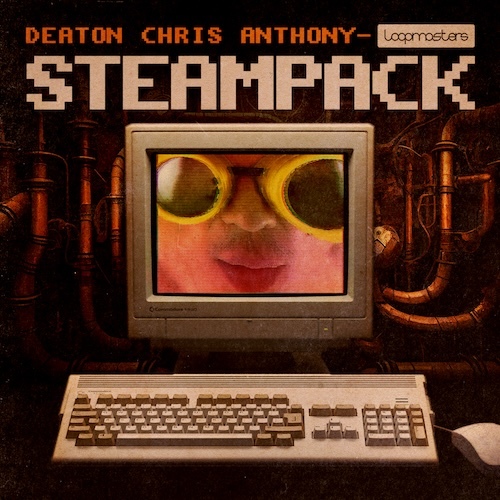Blog
How the Amiga Changed Music Production and Made its Own Scene
25 Apr '2024
Relive the obscure history of the Amiga computer’s use by musicians, and celebrate its impact on some of today’s most inspired artists.

If you’re above the age of 30, terms like VHS tape, dial-up internet, cassettes and Commodore Amiga will probably mean something to you. For everyone else, you might be left scratching your head. The Commodore Amiga was a personal computer launched in the mid-80s and was only on the market for approximately a decade.
While it was initially positioned as a personal business computer, the Amiga’s video and audio capabilities made it a popular choice among gamers and creatives. Unlike the alternatives at that time, the Amiga 500 had stereo audio output and four channels of 8-bit audio. The physical connectivity offered by the Amiga, along with the available 'tracker' software (early music production software) made the Amiga a hugely popular hub for producers and would-be producers.
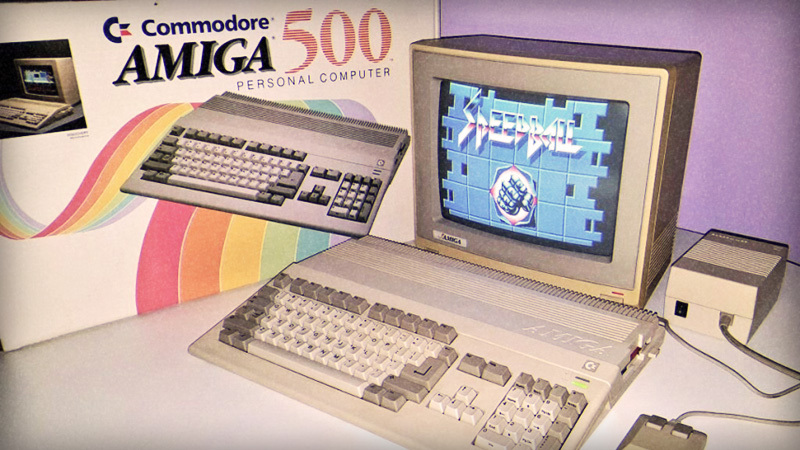
One such music producer is Deaton Chris Anthony, who despite being only on the cusp of being old enough to know what a VHS tape is, is a big proponent of Amigas and the workflow of tracker software. The American artist has used his Amiga 1200 and the OctaMED V4 tracker program, along with a choice collection of his studio hardware to create the Steampack sample pack, exclusively for Loopmasters.
We’ve now got considerably more production power in our pocket than an Amiga does, so why are modern producers like Deaton opting to use these technological relics instead of the latest offerings? Let’s look further into how the Amiga has shaped music production over the years, and consider its relevance in today’s creative landscape.
The Amiga 1000 was launched in 1985, and packed something that its competitors didn’t; an onboard audio chip called Paula. The chip enabled audio playback, floppy disk drive control, serial port input/output and mouse/joystick buttons, not to mention the stereo sound across four channels as mentioned earlier.
The Late 80s and Early 90s
While the Amiga 1000 was relatively affordable compared to kitting out an entire music studio with hardware samplers and synthesisers, Commodore were up against stiff competition, namely the Atari ST and Macintosh’s offering at that time. Off the back of that, they launched the even more affordable Amiga 500 in 1987. The pricing strategy worked, and by 1990, the Amiga 500 had outsold its competitors.
It wasn’t just the price that attracted a larger user base than other options. Along with the various audio functionality mentioned above, the Amiga had MIDI meaning it could be hooked up to external hardware such as AKAI samplers. If you didn’t have an external sampler though, it didn’t matter, as the Amiga had the capability to do sampling itself – making it a hit within the House and Techno scene.
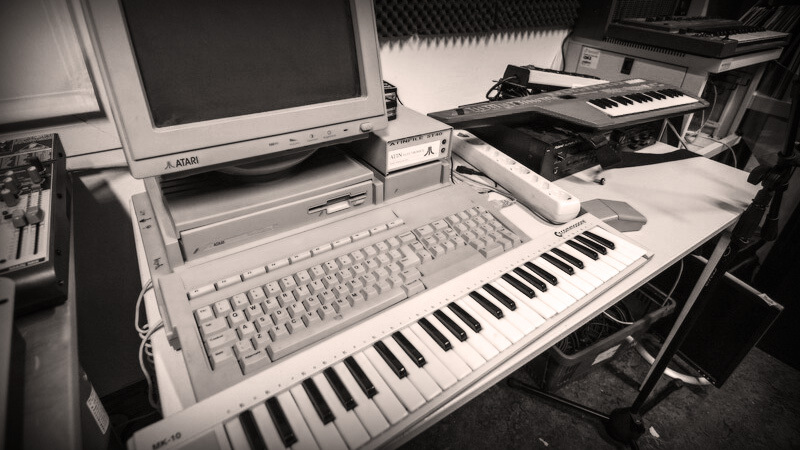
The Impact of Trackers
Unlike using external audio hardware, the Amiga needed to be paired with suitable software in order to create music. This came in the form of tracker programs such as ProTracker and OctaMED, or the very first piece of tracker software, after which the workflow is named, The Ultimate Soundtracker. Trackers offered a slightly different workflow to other sequencers and DAWs, as they work from top to bottom instead of left to right. Trackers are still available to today's desktop user, including OpenMPT, which is a Windows-based tracker (seen below), and the more contemporary Renoise.
![]()
Additionally, trackers work in blocks meaning you sequence individual samples or notes within a block, then sequence the blocks to create longer sequence variations, similar to a song mode in a modern sequencer. Anyone who has dabbled in DJing or music production will understand the relevance of phrasing in electronic music. It’s clear to see how the use of trackers brought about by the popularity of Amigas may have contributed to the way we create electronic music today.
Aphex Twin, Calvin Harris and Kanye West are all known to have used Amigas running various pieces of tracker software on their earlier projects. Rumour has it that the first version of Darude’s Sandstorm was made on a tracker too.
The Demoscene
There’s a reason we’ve made more frequent reference to tracker software like ProTracker and OctaMED, despite them coming later than their predecessor The Ultimate Soundtracker. By all accounts, the latter wasn’t very good. In fact it was so bad, that hackers took it upon themselves to step in and straighten things out.
After extracting the source code from the software demo, the hackers were able to create a new and improved version called Noisetracker, along with a number of other clones. One of these clones actually went on to become ProTracker, one of the more refined options available on the Amiga. They did such a good job of this upgrade that the official second version of The Ultimate Soundtracker was a commercial flop too.
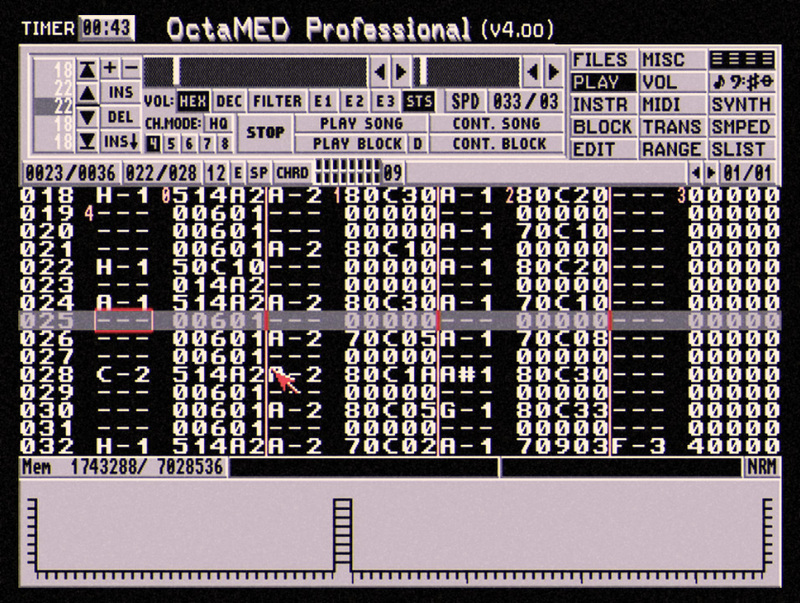
The creation, distribution and resulting popularity of these cloned pieces of tracker software essentially paved the way for the concept of open-source software development as we know it today. In the same vein, the way that trackers saved audio and project files made them extremely easy to trade with one another. Anyone could load up a tracker project and hear or edit how music was made.
Trading software programs, games, visuals and tracker-made music became known as the Demoscene, which lives on today in internet communities like demoscene.info and pouet.net, as well as in the real world at gatherings known as demoparties.
Jungle, Rave and Hardcore
By the end of the 90s, the use of Amigas was rife in the rapidly expanding circles of Jungle, Drum and Bass, Rave and Hardcore. Artists like Aphrodite, DJ Zinc and Pete Cannon were all testing the boundaries of the Amiga. This era of uptempo and often frantic dance music is recognised for having a certain sound quality that came as a result of the audio architecture of the Amiga, as well as other hardware samplers like the AKAI range and E-mu SP1200.
In the case of the Amiga, the 8-bit resolution of the Paula audio chip gave the audio a kind of lo-fi crunchy sound. While this wasn’t necessarily a desirable sonic characteristic at the time, the strong associations that many people have with that sound make it a nostalgic one. Now, you can get software instruments that emulate that low-grade sound of the 90s.
Inphonik’s RX1200 is a sampler plugin that emulates the gritty 12-bit tones and textures of the E-mu SP1200, while D16 Group’s Decimort 2 is an advanced bit crusher plugin, with which you can simulate all manner of crunching and aliasing.
The Use of Amigas Today
Despite being less powerful, less versatile, heavier and slower than the more conventional available to us today, the Amiga continues to be a staple piece of kit for many producers. As well as artists who have used the 80s technology for years such as Legowelt, Pete Cannon and Royksopp, as well as a new wave of Amiga users that includes Deaton Chris Anthony.
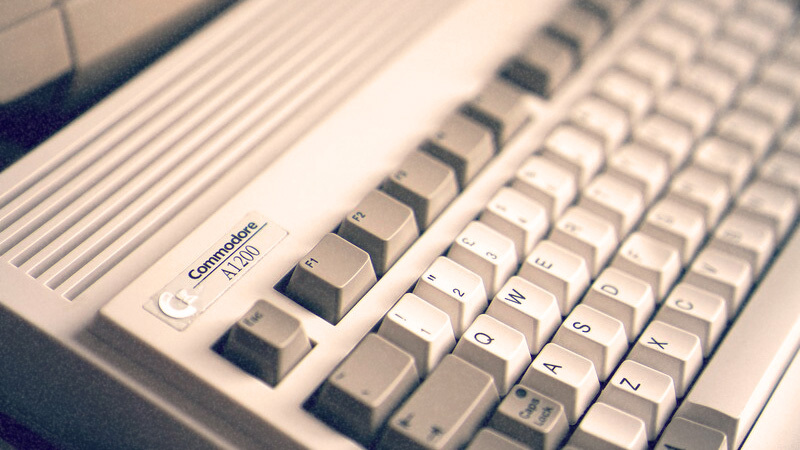
A common theme among those who use the Amiga, is the creative limitations it forces upon you. If you open up a new project in a DAW, the options are infinite. Although that may seem like an advantage, having endless choices can stunt creativity. Depending on the tracker software used, you may only have eight internal tracks of audio to work with, but this can encourage you to develop innovative solutions to those restrictions.
In an interview with MusicTech, Deaton described the Amiga as his “trusty inspiration creator. It just has that ‘sound’ and it’s so limited that I find it’s a hit maker every time. Four tracks – simplicity”. As well as his Amiga, the LA-based artist also uses a Polyend Tracker, which gives him a more contemporary approach to creating music with the tracker workflow.
Deaton Chris Anthony’s Steampack sample pack contains a varied selection of drum breaks and synth loops as well as all manner of one-shots, vocal hits and FX. If you want to infuse your own productions with the gritty, filtered sound of the Amiga, you can grab the pack now exclusively with Loopmasters.
FAQs
Why was the Amiga so good?
The Commodore Amiga contained a custom chipset, including the Paula audio chip which enabled audio playback, floppy disk drive control, serial port input/output and mouse/joystick buttons. The Amiga also had plenty of connectivity, with MIDI as well as stereo outputs. A large part of the Amiga’s success can be attributed to the various versions of tracker software that were available on the device.
Why did the Amiga fail?
Early on in their existence, Commodore launched the Amiga 500 at a considerably cheaper price than its predecessor, the 1000, and than its Atari, Mackintosh and IBM competitors. This helped to drive sales at the time, but ultimately positioned them as a budget option within the market. Additionally, they were unable to keep up with their competitors in later years, until Commodore eventually went bust.
How much did the Amiga cost at launch?
The Commodore Amiga 1000 was launched in 1985, and cost $1,295, which was equivalent to $2,884 in 2016.
